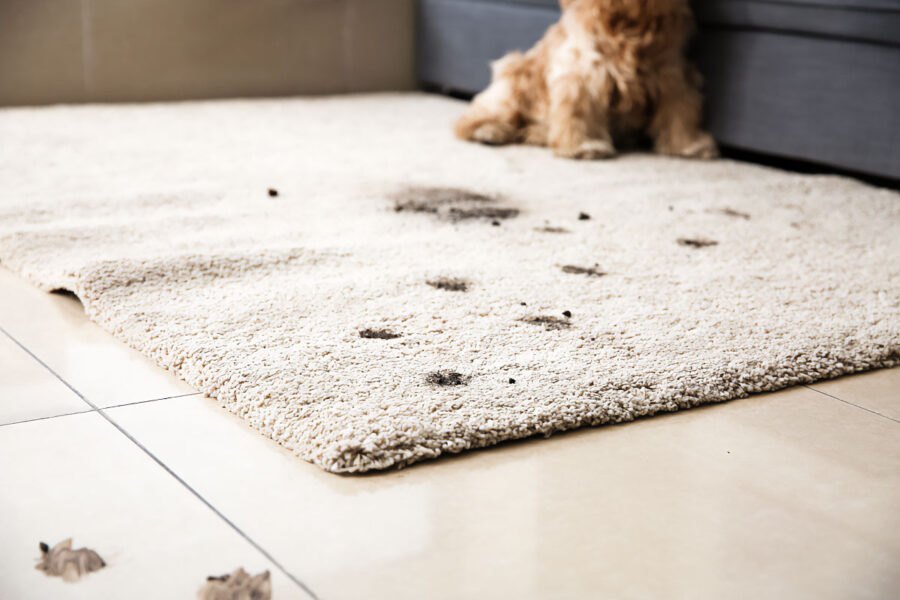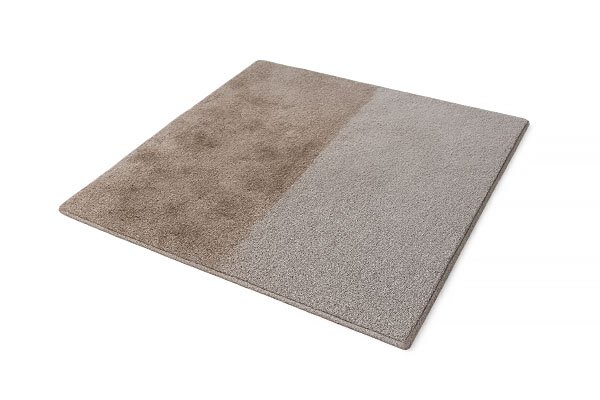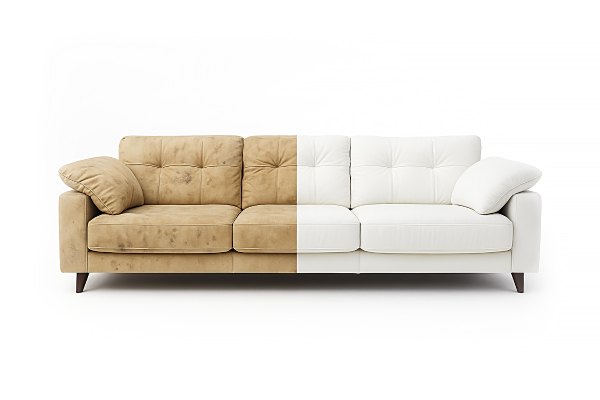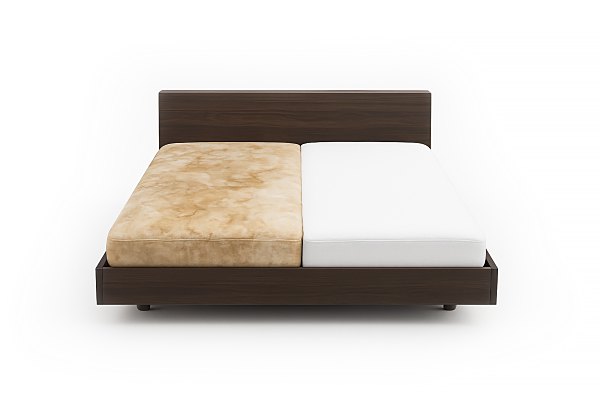Pet accidents on rugs create one of the most challenging cleaning situations homeowners face. The combination of organic compounds, moisture, and porous rug fibres creates a perfect environment for stains and odours to penetrate deep into the material. These accidents don’t just affect the surface appearance of rugs but can create lasting damage that becomes more difficult to address over time.
The challenge extends beyond simple surface cleaning. Pet waste contains proteins, enzymes, and bacteria that bond with rug fibres at a molecular level. Traditional cleaning methods often fail because they only address surface contamination while leaving deeper residues untouched. This incomplete cleaning allows odours to return and can attract pets back to the same spot for repeat accidents.
Understanding the science behind pet stains and implementing proper cleaning techniques makes the difference between temporary fixes and permanent solutions. The right approach combines immediate action, appropriate cleaning agents, and systematic treatment methods. Success depends on matching cleaning techniques to specific rug materials while addressing both visible stains and invisible odour sources that can persist for months without proper treatment.
Understanding why pet accidents create lasting stains and smells in rug fibres
Pet accidents create complex cleaning challenges because of the unique chemical composition of animal waste and how it interacts with different rug materials. Understanding these interactions helps explain why simple cleaning attempts often fail and why specific treatment approaches work better than others.
Chemical composition of pet waste
Pet urine contains multiple compounds that create different cleaning challenges. Urea breaks down into ammonia over time, creating the sharp smell associated with old accidents. Proteins and enzymes in waste products bond with rug fibres, creating permanent discolouration if not treated properly. Bacteria multiply rapidly in the warm, moist environment created by accidents, producing additional odour compounds.
The pH level of pet waste ranges from acidic to alkaline depending on the animal’s diet and health. This variation affects how waste interacts with different rug materials. Natural fibres like wool react differently to acidic waste compared to synthetic materials like nylon or polyester. The chemical reaction between waste and fibres can cause permanent colour changes if not neutralised quickly.
Crystalline deposits form as urine dries, embedding deep into rug pile and backing materials. These crystals reactivate when exposed to moisture, releasing odours even months after the original accident. The deeper these deposits penetrate, the more difficult they become to remove completely.
How different rug materials absorb and retain odours
Natural fibre rugs absorb liquids more readily than synthetic alternatives. Wool rugs can absorb up to 30% of their weight in moisture before feeling wet to touch. This absorption capacity means accidents penetrate deeper into natural fibres, making complete removal more challenging. The protein structure of wool also creates more bonding sites for waste compounds.
Synthetic rugs resist initial absorption but still trap odours in the spaces between fibres and in backing materials. Polypropylene rugs repel liquids initially but allow waste to pool on the surface, potentially spreading to larger areas. Nylon fibres can hold odour molecules in their structure, requiring specific cleaning agents to break these bonds.
Rug construction affects how accidents spread and penetrate. Hand-knotted rugs with dense pile trap waste near the surface initially but allow deeper penetration over time. Machine-made rugs with synthetic backing materials can wick moisture through to subflooring, creating additional cleaning challenges. Loop pile construction holds waste differently than cut pile, affecting cleaning technique selection.
Pro tip: Test rug material reaction to cleaning solutions in an inconspicuous area before treating visible stains. Different materials require different pH levels and cleaning agents for safe, effective treatment.
Essential household ingredients that effectively break down pet waste and neutralise odours
Common household items provide effective solutions for pet accident cleanup when used correctly. These ingredients work through different mechanisms to break down waste compounds, neutralise odours, and prevent staining. Understanding how each ingredient works helps create more effective cleaning solutions.
Enzymatic action of common household products
White vinegar contains acetic acid that neutralises alkaline compounds in pet waste while breaking down protein structures. The acid also creates an environment hostile to bacteria growth, preventing additional odour development. Vinegar works best on fresh accidents but can reactivate and remove crystalline deposits from older stains.
Baking soda absorbs moisture and neutralises both acidic and alkaline odours through chemical buffering action. Its fine crystal structure allows deep penetration into rug fibres where it continues working for hours after application. The alkaline nature of baking soda helps break down acidic waste compounds while absorbing volatile odour molecules.
Hydrogen peroxide breaks down organic compounds through oxidation, effectively destroying the molecular structure of waste products. This breakdown eliminates both stains and odour sources at the molecular level. The bubbling action of hydrogen peroxide also helps lift waste products from deep within rug fibres, making removal more complete.
Proper mixing ratios and application methods
Creating effective cleaning solutions requires precise measurements and proper mixing techniques. A solution of one part white vinegar to three parts water provides optimal cleaning strength without damaging most rug materials. This concentration neutralises waste compounds while remaining safe for regular use on various rug types.
Essential cleaning solution recipes:
- Basic neutralising solution: 1 cup white vinegar + 3 cups warm water
- Heavy-duty deodoriser: 2 tablespoons baking soda + 1 cup warm water
- Stain removal paste: 3 parts baking soda + 1 part hydrogen peroxide
- Enzyme activator: 1 tablespoon dish soap + 1 cup hydrogen peroxide solution
Mixing order affects solution effectiveness. Always add baking soda to water first, stirring until completely dissolved before adding other ingredients. Hydrogen peroxide should be added last to prevent premature activation. Fresh solutions work better than stored mixtures, so prepare only the amount needed for immediate use.
Application temperature influences cleaning effectiveness. Warm solutions penetrate rug fibres more effectively than cold mixtures. Water temperature between 40-50°C activates cleaning agents without damaging rug materials. Hot water can set protein stains permanently, while cold water reduces cleaning agent effectiveness.
Safety considerations and material compatibility
Different rug materials require specific cleaning approaches to prevent damage. Wool rugs need pH-neutral solutions to prevent fibre damage and colour bleeding. Silk rugs require gentle treatment with diluted solutions and minimal moisture. Synthetic rugs tolerate stronger cleaning solutions but may show water spots if not rinsed properly.
Testing cleaning solutions prevents costly damage to valuable rugs. Apply small amounts of cleaning solution to hidden areas and check for colour bleeding, texture changes, or other adverse reactions. Wait 24 hours before proceeding with full treatment to ensure no delayed reactions occur.
Ventilation during cleaning prevents chemical buildup and speeds drying time. Open windows and use fans to circulate air during and after cleaning. Proper ventilation also prevents mould growth in damp rug materials. Avoid using multiple cleaning products simultaneously, as chemical interactions can create harmful fumes or reduce cleaning effectiveness.
Pro tip: Create a cleaning kit with pre-measured ingredients stored in clearly labelled containers. This preparation allows immediate response to accidents when quick action provides the best results.
Step-by-step methods for treating fresh pet accidents on different rug materials
Immediate response to pet accidents prevents permanent staining and odour penetration. Different rug materials require specific treatment approaches, but all benefit from quick action and systematic cleaning methods. The first few minutes after an accident determine the success of cleanup efforts.
Immediate response procedures
Quick action prevents waste from penetrating deep into rug fibres and backing materials. Remove solid waste immediately using disposable gloves and paper towels, working from the outside of the affected area toward the centre to prevent spreading. Avoid rubbing or pressing waste into the rug surface during removal.
Blot liquid waste with clean, absorbent materials, applying gentle pressure to draw moisture from rug fibres. Replace saturated towels frequently to maintain absorption effectiveness. Continue blotting until no more moisture transfers to clean towels. Avoid wiping motions that can spread waste to unaffected areas.
Mark the affected area boundaries with removable tape or chalk to ensure complete treatment coverage. This marking helps track cleaning progress and prevents missing contaminated areas during multi-step treatment processes. Document the accident location and time for future reference if repeat treatments become necessary.
Material-specific cleaning approaches
Wool rugs require gentle treatment to preserve natural fibre integrity. Use cool water solutions and avoid excessive moisture that can cause shrinkage or colour bleeding. Apply cleaning solutions sparingly and work from the outside of stains toward the centre. Rinse thoroughly with clean water to remove cleaning residue that can attract dirt.
Wool rug cleaning steps:
- Blot excess moisture with clean towels
- Apply diluted vinegar solution (1:4 ratio with water)
- Work solution gently into fibres with soft brush
- Rinse with clean water using spray bottle
- Blot dry and allow air circulation for complete drying
Synthetic rugs tolerate stronger cleaning solutions and more aggressive treatment methods. These materials resist colour bleeding and shrinkage, allowing for thorough cleaning with enzyme-based solutions. Use warm water to activate cleaning agents and improve penetration into synthetic fibres.
Natural fibre rugs like jute or sisal need minimal moisture to prevent structural damage. Use dry cleaning methods when possible, applying absorbent powders that can be vacuumed after treatment. When liquid cleaning becomes necessary, work quickly and ensure complete drying to prevent mould growth.
Drying and ventilation requirements
Proper drying prevents secondary problems like mould growth and fibre damage. Position fans to circulate air across treated areas, changing air direction periodically to ensure even drying. Dehumidifiers help remove excess moisture from the air, speeding the drying process in humid conditions.
Elevate treated rug sections when possible to allow air circulation underneath. Use clean towels or blocks to create airspace between the rug and floor. This elevation prevents moisture from becoming trapped against subflooring where it can cause additional problems.
Monitor drying progress by checking moisture levels in treated areas every few hours. Completely dry rugs feel normal to touch and show no colour variations from moisture. Damp areas appear darker than surrounding material and feel cool to touch. Continue drying efforts until no moisture remains in any part of the treated area.
Pro tip: Place moisture-absorbing materials like activated charcoal or silica gel packets around treated areas to speed drying and prevent odour development during the drying process.
Professional rugs cleaning services in Sydney provided by SevenClean
Professional cleaning services provide advanced treatment options for challenging pet stains and valuable rugs that require specialised care. SevenClean offers comprehensive rug cleaning services throughout Sydney, combining professional-grade equipment with expert knowledge of different rug materials and cleaning requirements.
Comprehensive carpet and rug cleaning services
SevenClean’s carpet and rug cleaning services address both surface contamination and deep-seated odours that household cleaning methods cannot reach. Their professional-grade steam cleaning equipment penetrates deep into rug fibres, extracting waste residues and neutralising odour sources at the molecular level. This thorough approach prevents odour return and extends rug life significantly.
The company’s cleaning process begins with detailed inspection to identify stain types, rug materials, and appropriate treatment methods. Pre-treatment solutions target specific stain types, breaking down waste compounds before the main cleaning process. Hot water extraction removes loosened contaminants along with cleaning solutions, leaving rugs clean and residue-free.
Professional cleaning equipment generates higher temperatures and stronger suction than household machines. This increased power removes more contaminants and reduces drying time compared to DIY methods. The controlled application of cleaning solutions prevents over-wetting that can damage rug materials or create new problems.
Specialised treatment for different rug types
SevenClean’s expertise extends to various rug materials, from delicate antique pieces to modern synthetic rugs. Their technicians understand how different materials respond to cleaning processes and adjust methods accordingly. Wool rugs receive gentle treatment that preserves natural oils and prevents shrinkage, while synthetic rugs can withstand more aggressive cleaning approaches.
Persian and Oriental rugs require specialised knowledge of traditional construction methods and dye types. SevenClean’s experience with these valuable pieces ensures proper treatment that maintains colour integrity and structural soundness. Hand-knotted rugs receive careful attention to prevent damage to delicate knot structures during cleaning.
The company also provides cleaning services for specialty rugs like silk, bamboo, and natural fibre materials. Each material type requires specific cleaning agents and techniques to achieve optimal results without causing damage. This expertise proves valuable for homeowners with diverse rug collections or unusual materials.
Additional services for complete home care
SevenClean extends their expertise beyond rug cleaning to provide comprehensive home cleaning solutions. Their upholstery cleaning services address pet accidents on furniture using similar professional techniques and equipment. This service proves particularly valuable when pets have accidents on multiple surfaces throughout the home.
SevenClean’s complete service range includes:
- Professional carpet and rug cleaning with pet stain specialisation
- Upholstery cleaning for furniture and decorative items
- Mattress cleaning to remove odours and allergens
Mattress cleaning services become important when pet accidents affect bedding areas. Professional treatment removes odours and bacteria that can affect sleep quality and health. The company’s specialised equipment and cleaning solutions address these challenging cleaning situations effectively.
SevenClean services
The integrated approach to home cleaning ensures consistent results across different surfaces and materials. Using the same professional standards and equipment for all services provides homeowners with reliable, high-quality results throughout their homes.
Pro tip: Schedule professional cleaning services immediately after major pet accidents on valuable rugs. Quick professional intervention prevents permanent damage and saves money compared to rug replacement costs.
Advanced techniques for removing set-in stains and persistent odours from older accidents
Older pet accidents present greater challenges because waste compounds have had time to penetrate deeply into rug materials and undergo chemical changes. These set-in stains and persistent odours require advanced treatment techniques that address contamination at multiple levels within rug construction.
Deep penetration treatment methods
Set-in stains require breaking down crystallised waste deposits that have formed over time. Steam treatment helps reactivate these deposits, making them accessible to cleaning solutions. Professional-grade steam cleaners generate temperatures high enough to break molecular bonds while providing controlled moisture application that prevents rug damage.
Enzyme treatments work slowly to break down protein structures in old stains. These biological cleaning agents require time to work effectively, often needing multiple applications over several days. The enzyme action continues working even after application, gradually breaking down waste compounds that traditional cleaning methods cannot reach.
Injection cleaning techniques deliver cleaning solutions directly into rug backing materials where old accidents have penetrated. This targeted approach addresses contamination that surface cleaning cannot reach. Multiple injection points ensure complete coverage of affected areas, preventing odour sources from remaining in untreated sections.
Multi-step odour elimination processes
Persistent odours require systematic treatment that addresses different odour sources sequentially. Initial treatment focuses on neutralising surface odours and reactivating crystallised deposits. Secondary treatments target deeper contamination using enzyme solutions that continue working over extended periods.
Advanced odour elimination sequence:
- Steam reactivation of crystallised deposits
- Enzyme treatment for protein breakdown
- Oxidising agent application for molecular destruction
- Neutralising rinse to balance pH levels
- Antimicrobial treatment to prevent bacterial growth
Ozone treatment provides molecular-level odour destruction for severe cases. Professional ozone generators create controlled concentrations that break down odour molecules without damaging rug materials. This treatment requires proper ventilation and timing to ensure safety and effectiveness.
Sealing treatments prevent odour migration from backing materials to rug surfaces. These specialised products create barriers that trap remaining odour sources while allowing normal air circulation. Sealing works best as a final step after other treatments have reduced odour sources to minimal levels.
Prevention of recurring problems
Treating the subfloor beneath affected rugs prevents odour sources from contaminating cleaned rugs. Wood subflooring may require sanding and sealing if pet waste has penetrated through rug backing. Concrete floors need specialised sealers that prevent moisture and odour transmission.
Creating physical barriers between rugs and subflooring helps prevent future contamination. Moisture barriers and odour-blocking pads provide protection while maintaining normal rug appearance and function. These preventive measures prove particularly valuable in areas where repeat accidents are likely.
Regular monitoring of treated areas helps identify recurring problems before they become severe. Monthly inspections using UV lights can reveal invisible contamination that needs additional treatment. Early detection allows for targeted retreatment that prevents major cleaning challenges.
Pro tip: Document treatment dates and methods used for each accident location. This record helps track treatment effectiveness and guides future cleaning decisions if problems recur.
Prevention strategies to protect your rugs and maintain a fresh-smelling home
Preventing pet accidents and minimising their impact requires understanding pet behaviour, implementing protective measures, and maintaining clean environments that discourage repeat incidents. Successful prevention combines training, environmental modifications, and protective products that work together to keep rugs clean and odour-free.
Environmental modifications and protective measures
Creating designated pet areas reduces the likelihood of accidents on valuable rugs. Washable rugs in high-traffic pet areas provide easy cleanup options when accidents occur. These temporary solutions protect permanent flooring and valuable rugs while maintaining home aesthetics.
Waterproof rug pads create barriers between rugs and subflooring, preventing waste penetration during accidents. These pads also provide cushioning and prevent rug movement that can contribute to accidents. Quality rug pads with moisture barriers prove particularly valuable in homes with elderly or sick pets.
Effective prevention strategies include:
- Strategic placement of washable rugs in accident-prone areas
- Installation of waterproof rug pads under valuable rugs
- Regular cleaning schedules to maintain fresh environments
- Immediate cleanup protocols for any accidents that occur
- Environmental enrichment to reduce stress-related accidents
Lighting improvements help pets navigate safely, reducing accidents caused by disorientation. Night lights in hallways and pet areas provide guidance without disturbing human sleep patterns. Motion-activated lights offer automatic illumination when pets move through areas during nighttime hours.
Regular maintenance routines
Weekly vacuuming removes pet hair, dander, and tracked debris that can contribute to odour development. High-quality vacuum cleaners with HEPA filters capture microscopic particles that standard vacuums miss. Regular filter replacement maintains suction power and prevents recirculation of allergens and odours.
Monthly deep cleaning treatments prevent odour buildup and maintain rug appearance. Rotation of cleaning products prevents residue accumulation that can attract dirt and odours. Professional cleaning services every 6-12 months provide thorough treatment that household methods cannot achieve.
Seasonal rug rotation allows thorough cleaning and inspection of high-use areas. This practice distributes wear patterns and provides opportunities to address minor problems before they become major issues. Storage of seasonal rugs in clean, dry conditions prevents mould and pest problems.
Training and behavioural considerations
Understanding pet behaviour patterns helps identify potential accident locations and timing. Stress, illness, and routine changes can trigger accidents in previously house-trained pets. Monitoring these factors allows for preventive measures that reduce accident likelihood.
Positive reinforcement training reinforces appropriate elimination behaviours while addressing problem areas. Consistent routines help pets understand expectations and reduce anxiety that can contribute to accidents. Professional training assistance may be necessary for persistent behavioural issues.
Creating positive associations with appropriate elimination areas encourages proper behaviour. Regular cleaning and maintenance of designated pet areas makes them more appealing than indoor alternatives. Reward systems for appropriate behaviour reinforce training efforts and build positive habits.
Pro tip: Keep emergency cleaning supplies readily available in multiple locations throughout the home. Quick response to accidents prevents permanent damage and reduces cleanup time and effort.
Summary
Successfully managing pet stains and odours in rugs requires understanding the science behind contamination, using appropriate cleaning methods, and implementing effective prevention strategies. The complex chemical composition of pet waste creates lasting problems when not addressed properly, but systematic treatment approaches can restore rugs to clean, odour-free conditions.
Immediate response using household ingredients like vinegar, baking soda, and hydrogen peroxide provides effective treatment for fresh accidents. Different rug materials require specific approaches, with natural fibres needing gentler treatment than synthetic alternatives. Professional services like those provided by SevenClean offer advanced solutions for challenging situations and valuable rugs that require expert care.
Prevention remains the most effective strategy for maintaining clean, fresh-smelling homes. Environmental modifications, regular maintenance routines, and understanding pet behaviour patterns work together to minimise accidents and their impact. When accidents do occur, quick action and proper treatment methods ensure rugs remain beautiful and functional for years to come.





